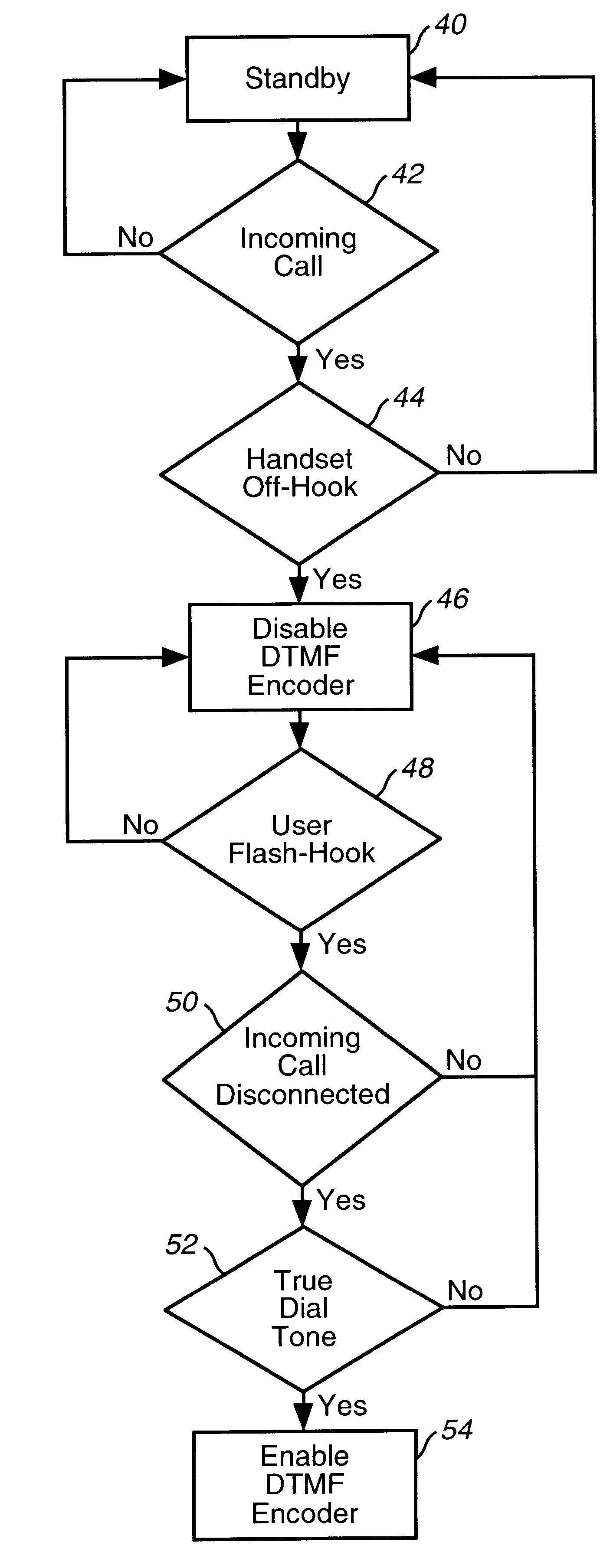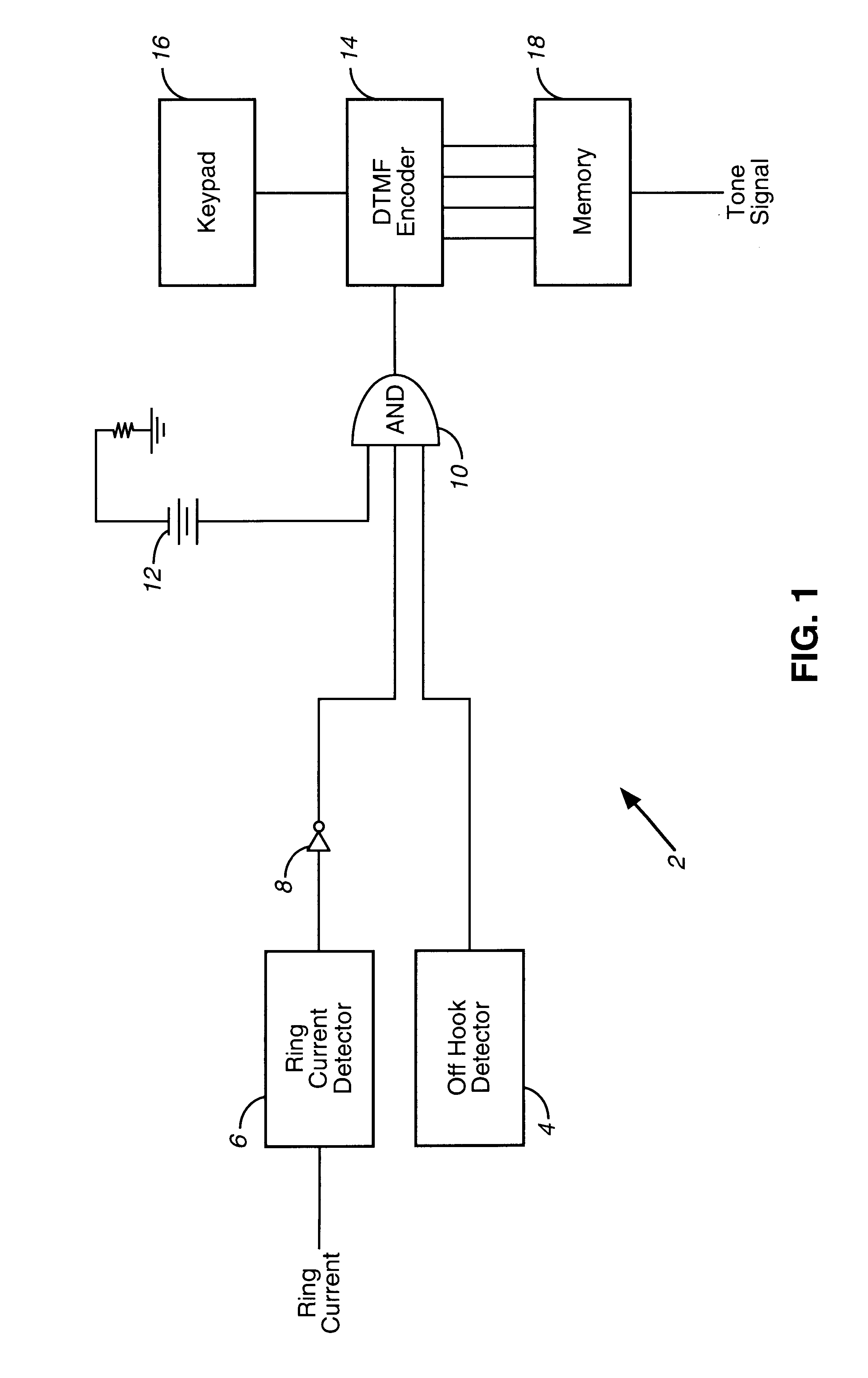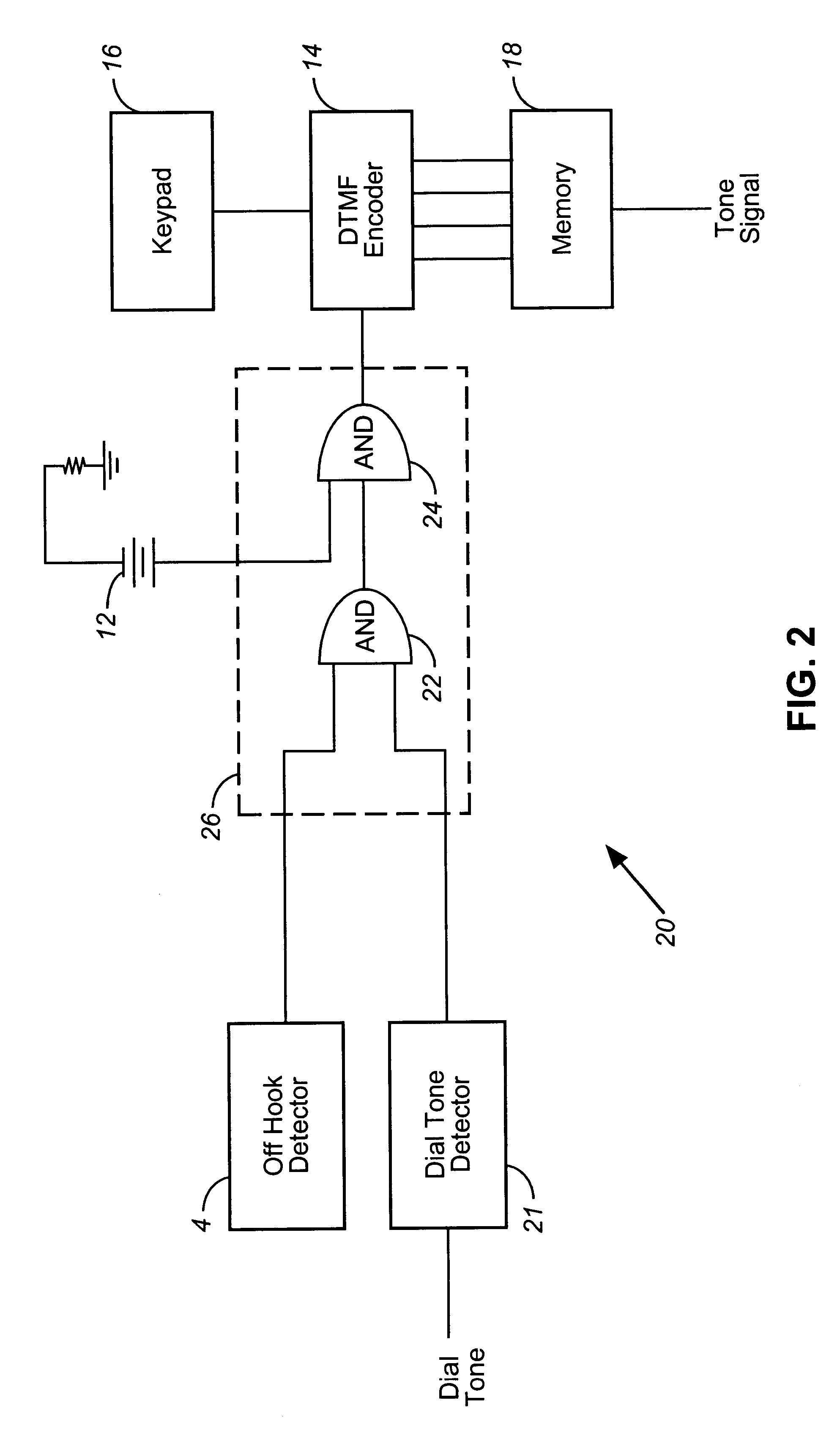System and method therefor of preventing fraud on pay phone credit/debit calling card authorization
a technology of calling card authorization and pay phone, which is applied in the field of system and method therefor of preventing fraud on pay phone credit/debit calling card authorization, and can solve the problem that most of the pay phone's ringers are usually disabled
- Summary
- Abstract
- Description
- Claims
- Application Information
AI Technical Summary
Benefits of technology
Problems solved by technology
Method used
Image
Examples
first embodiment
The instant invention prevents the above types of fraudulent schemes by adding circuitry that makes inoperative the keypad of the pay phone. As shown in FIG. 1, the instant invention circuit 2 to be added to the conventional circuitry of a pay phone includes a ring current detector 6, which is a conventional detector that discriminates a given level of current calculated to be representative of an incoming call. A second component of FIG. 1 circuit is an off-hook detector 4, which can be any kind of sensor that detects the handset as having been lifted off-hook. This sensor can be incorporated as part of the "cradle" of a conventional telephone. Ring current detector 6 in turn is connected, by way of a NOT gate 8, to an AND gate 10. Another input of AND gate 10 is the output from off-hook detector 4. Power is supplied to AND gate 10 by power supply 12. The output of AND gate 10 is output to a DTMF encoder 14, which has as another input the output from keypad 16 of the telephone. DTM...
second embodiment
the instant invention is illustrated in FIG. 2. The components in FIG. 2, as well as FIG. 3, which are the same as those shown in FIG. 1, arc numbered the same. The FIG. 2 circuit 20 has as one of its components the off-hook detector 4 discussed previously. Circuit 20 moreover has a true dial tone detector 21, which discriminates from inputs thereto whether a signal is a true dial tone. The outputs of both off-hook detector 4 and dial tone detector 21 are provided as an input to a second AND gate 22, which output is provided as an input to a second AND gate 24. A second input of AND gate is from power 12. The output of AND gate 24 is provided as an input to DTMF encoder 14. For the discussion of FIG. 2, AND gates 22 and 24 may be considered as a separate circuit, enclosed by dotted box 26.
Circuit 20 of FIG. 2 operates as follows, Assume that a pay phone is a public area that has its ring mechanism silenced is receiving an incoming call from a fraudster. Not suspecting, an authorized...
third embodiment
the instant invention is illustrated in FIG. 3. Circuit 30 of the third embodiment of the instant invention combines both circuits of FIGS. 1 and 2 to provide redundancy. To begin, circuit 30 incorporates off-hook detector 4, ring current detector 6 and true dial tone detector 21. The output of ring current detector 6 is provided to NOT gate 8. Likewise, the outputs from NOT gate 8 and off-hook detector 4 are provided as inputs to AND gate 10, which has as an additional input power 12. The output from off-hook detector 6 is also provided as an input to AND gate 22, which has as its other input the output from true dial tone detector 21. Like the circuit shown in FIG. 2, the output of AND gate 22 is provided as an input to AND gate 24, which has as its other input power 12a.
For circuit 30 of FIG. 3, the output of AND gate 10 and the output from AND gate 24 are provided as an inputs to an OR gate 32, which has its output provided as an input to DTMF encoder 14. Thus, so long as either...
PUM
 Login to view more
Login to view more Abstract
Description
Claims
Application Information
 Login to view more
Login to view more - R&D Engineer
- R&D Manager
- IP Professional
- Industry Leading Data Capabilities
- Powerful AI technology
- Patent DNA Extraction
Browse by: Latest US Patents, China's latest patents, Technical Efficacy Thesaurus, Application Domain, Technology Topic.
© 2024 PatSnap. All rights reserved.Legal|Privacy policy|Modern Slavery Act Transparency Statement|Sitemap



